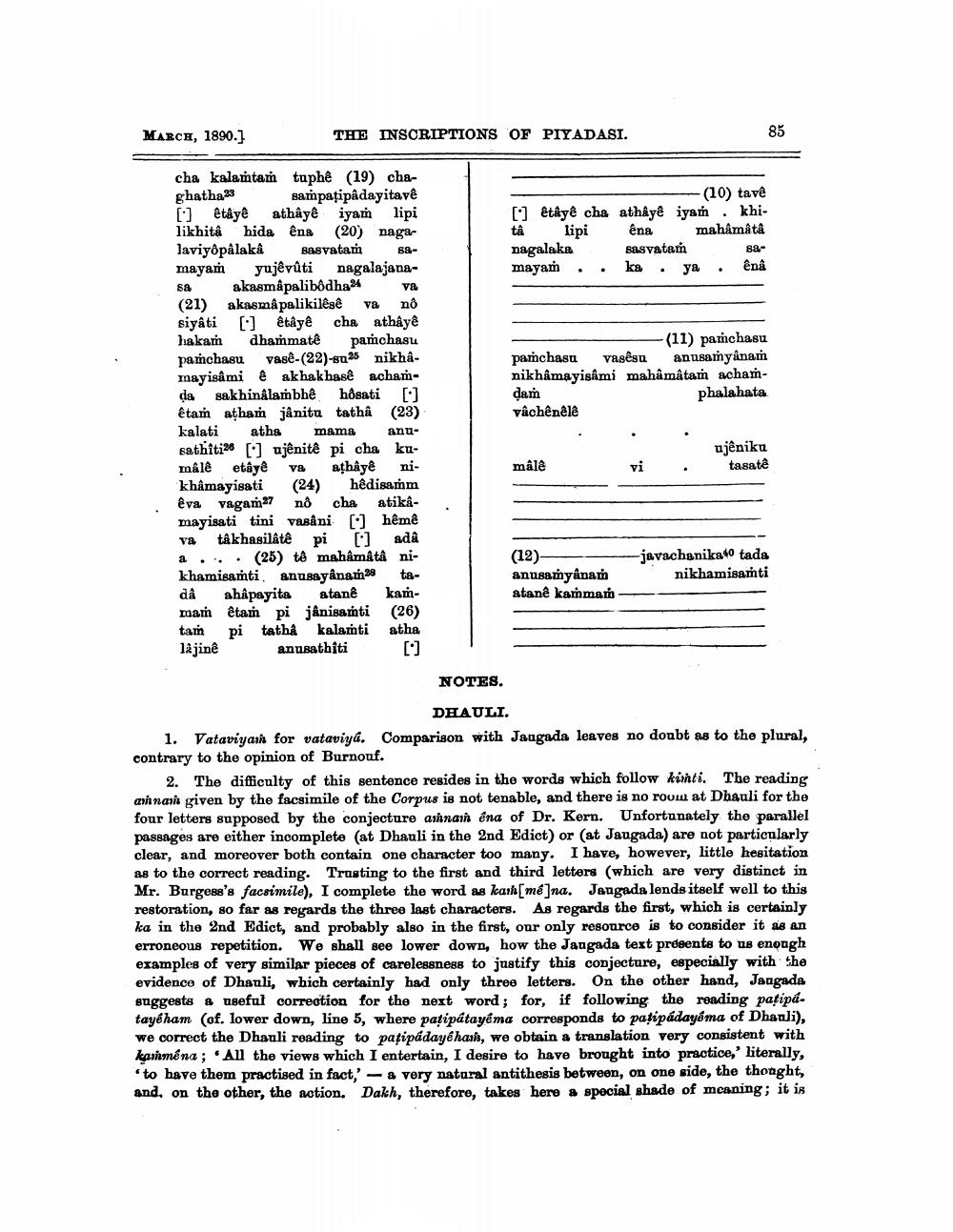________________
MARCH, 1890.]
THE INSCRIPTIONS OF PIYADASI.
85
-(10) tave [] êtâyê cha athâyê iyan . khitâ lipi e na mahâmâtâ nagalaka sasvatam samayam . . ka y a ênâ
cha kalamtam taphê (19) chaghatha23 sampaţipâdayitave [:] êtâye athầyê iyam lipi likhita hida ena (20) nagalaviyopalakå sasvatam samayam yajêvůti nagalajanasa akasmåpalibôdha va (21) akasma palikilêsê va no siyâti (0) êtâyê cha athâyê hakam dhaṁmate pamchasu pamchasu vase-(22)-su 25 nikhâmayisâmi e akhak hasê achamda sakhinalambhê hồsati [1] êtam atham janito tatha (23) kalati atha mama anusathiti26 [] ajênitê pi cha kumâle etâyê va athâyenikhâmayisati (24) hêdisaṁm eva vagam27 nô cha atikamayisati tini vasâni (1) hêmê va tâkhasilâtê pi [] ada a ... (25) tô mahamata nikhamisamti anusayanaṁ28 tada ahậpayita atane kammam êtam pi jânisamti (26) tam pi tatha kalamti atha lajine
annsathiti
(11) pamchasu pamchasu vasêsu anusamyånam nikhamayisami mahâmâtam achamdam
phalahata Vâchênele
ajêniku
tasate
mâle
-
(12) anusamyanam atanê kammar
javachanika10 tada
nikhamisamti -
NOTES.
DHAULI. 1. Vataviyar for vataviya. Comparison with Jaugada leaves no doubt as to the plural, contrary to the opinion of Burnouf.
2. The difficulty of this sentence resides in the words which follow kimti. The reading annan given by the facsimile of the Corpus is not tenable, and there is no room at Dhauli for the four letters supposed by the conjecture arnain ena of Dr. Kern. Unfortunately the parallel passages are either incomplete (at Dhanli in the 2nd Edict) or (at Jaugada) are not particularly clear, and moreover both contain one character too many. I have, however, little hesitation as to the correct reading. Trusting to the first and third letters (which are very distinct in Mr. Burgess's facsimile), I complete the word as karn[me]na. Jangada lends itself well to this restoration, so far as regards the three last characters. As regards the first, which is certainly ka in the 2nd Edict, and probably also in the first, our only resource is to consider it as an erroneous repetition. We shall see lower down, how the Jaagada text prdeents to us enough examples of very similar pieces of carelessness to justify this conjecture, especially with the evidence of Dhauli, which certainly had only three letters. On the other hand, Jangada suggests a useful correction for the next word; for, if following the reading patipd. tayéham (of. lower down, line 5, where patipátayéma corresponds to paripádayóma of Dhaali), we correct the Dhauli reading to pațipadaye hash, we obtain a translation very consistent with kaiména ; All the views which I entertain, I desire to have brought into practice,' literally, 'to have them practised in fact,' - & very natural antithesis between, on one side, the thought, and, on the other, the action, Dakh, therefore, takes here a special shade of mcaning; it is




